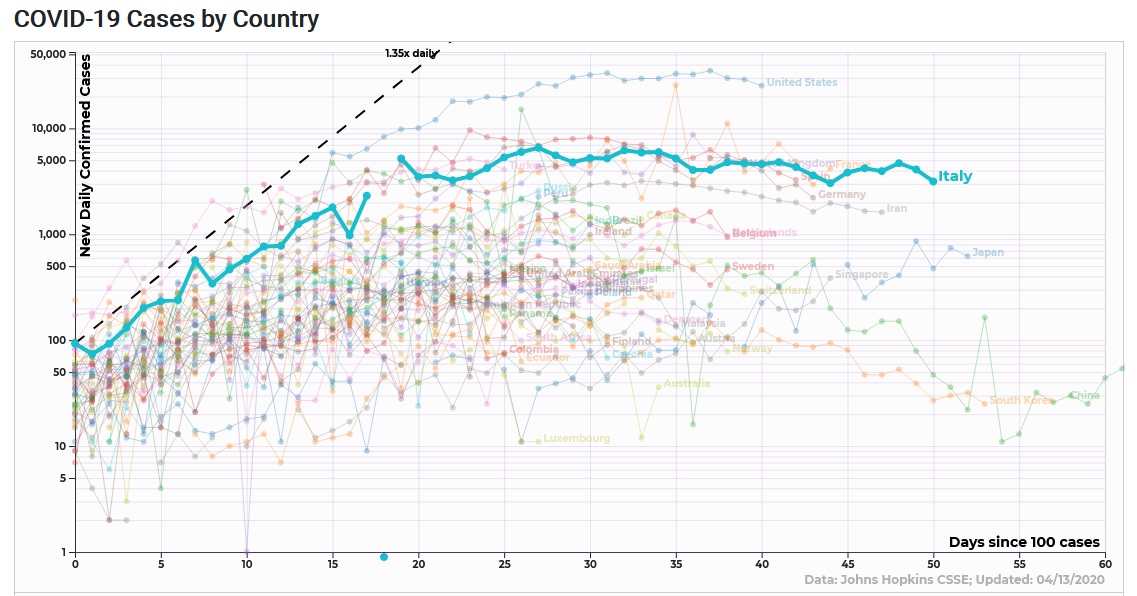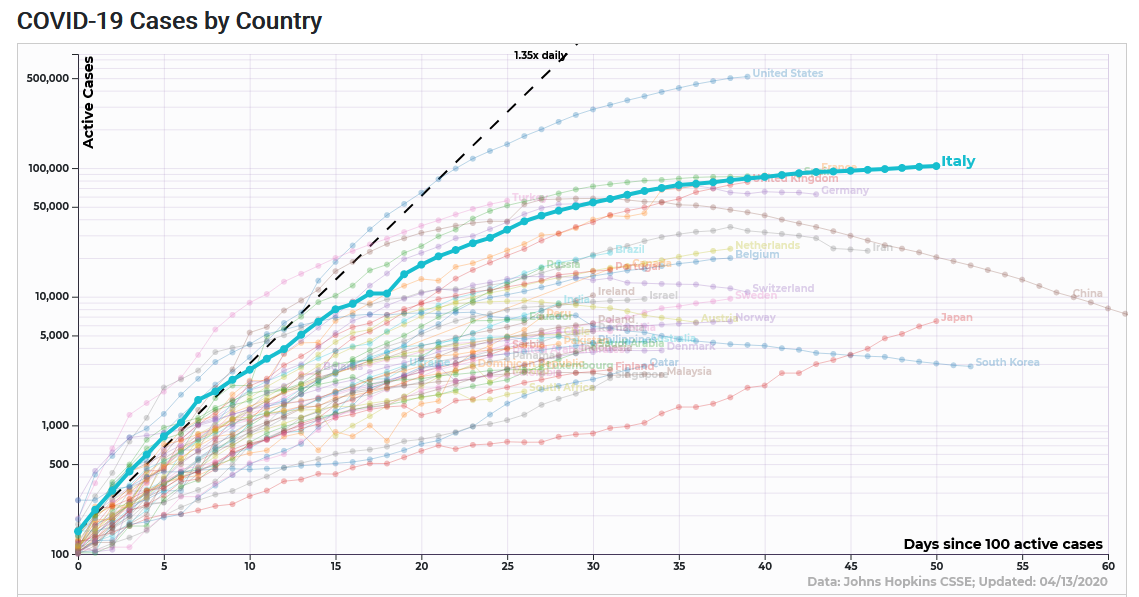There's a lot of talk these days about the coronavirus "peak":
- "As Coronavirus Cases Near 2 Million, Countries Try to Look Beyond Peak" (New York Times, 4/14/20)
- "US Nearing Coronavirus Peak as Deaths Climb Over 22,000" (US News, 4/13/20)
- "California Is Days Away From Its Projected Coronavirus Peak" (USA Today, 4/12/20)
- "Coronavirus State-by-State Projections: When Will Each State Peak?" (NPR, 4/7/20)
The idea of a "peak" gives the comforting impression that there is a corner to be turned, around which life will get back to some kind of normal. "The worst is over," as New York Gov. Andrew Cuomo was quoted in the New York Times (4/13/20). Or as President Donald Trump told Fox News (4/7/20; New York Post, 4/8/20), "I think New York is getting ready if not already, but getting ready to peak, and once it peaks, it will start coming down and it's going to come down fast."
Predictions of a peak are based on computer modeling, particularly from the Institute for Health Metrics and Evaluation (IHME). "The models do show that we are very close to the peak," FDA commissioner Stephen Hahn told ABC's "This Week" (4/12/20). IHME's model produces graphs that tend to suggest a rapid rise and fall in COVID-19 deaths — what you might describe as a peak:

IHME's projection for COVID-19 deaths in the United States.
I certainly hope to see the toll of the coronavirus trailing away like that. But I think this might be another case (FAIR.org, 3/17/20) where media are misleading by paying more attention to computer simulations than to real-world examples. (The following charts come from 91-DIVOC, an invaluable data visualization project.)
Take Italy, the Western country with the earliest major COVID-19 outbreak. When you look at new cases per day, they've been arriving at a fairly consistent rate of about 3,000 to 6,000 a day for a month now:

New COVID-19 cases per day (Italy highlighted)
This, in turn, has led to a quite steady level of active cases of infection:

Active cases of COVID-19 (Italy highlighted)
Which explains why the number of deaths per day in Italy is falling very gradually, if at all:

COVID-19 deaths per day (Italy highlighted)
You see similar plateaus in other Western countries that had early major outbreaks, like Spain and France. And the same pattern can be seen in California, the first — and one of the best-controlled — outbreaks among U.S. states:

New COVID-19 cases per day (California highlighted)
It's possible that these longstanding, seemingly self-sustaining outbreaks will soon take a turn for the better, and new cases and deaths will indeed fall off sharply. But it's also possible that the response to the coronavirus' pronounced lethality and asymptomatic infectiousness — a drastic physical separation necessary to prevent a quickly mounting death toll — means that COVID-19 will not be a normal disease with a steep arrival curve and an equally sudden departure.
In other words, there may be no peak.
People should indeed be thinking about how elements of normal life can be resumed most safely if the coronavirus ebbs away. But we also need to think about what we'll do if physical separation is something that needs to be sustained not for weeks, but for months — possibly even until a vaccine is developed, which optimistic estimates put at least a year away. How does one keep a population fed and sheltered while most of their economy is unable to function? And how does one maintain that economy in a state that can eventually be revived? These are questions that we may have no choice but to answer.



Shares